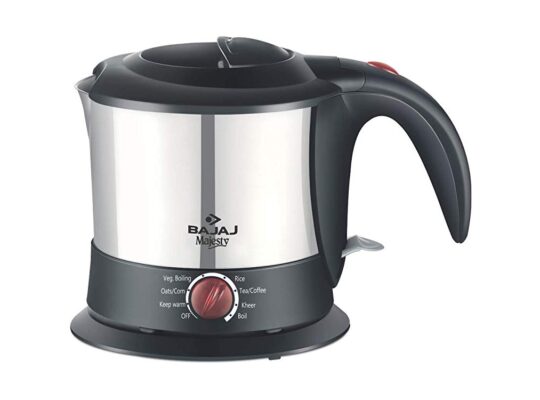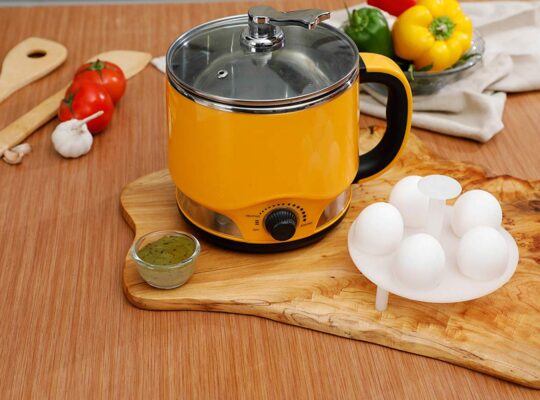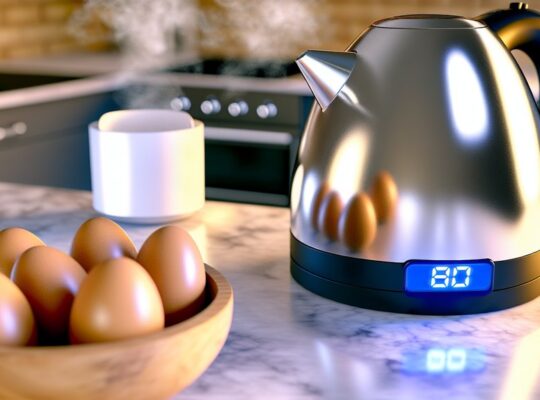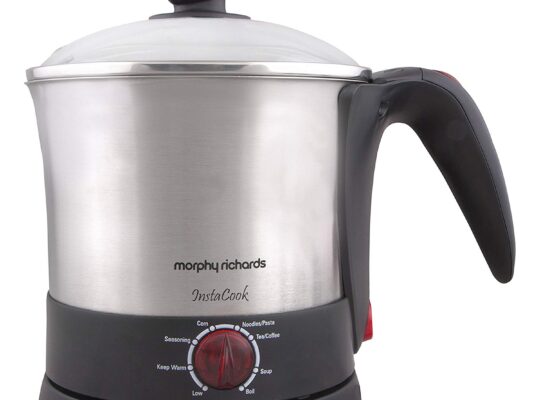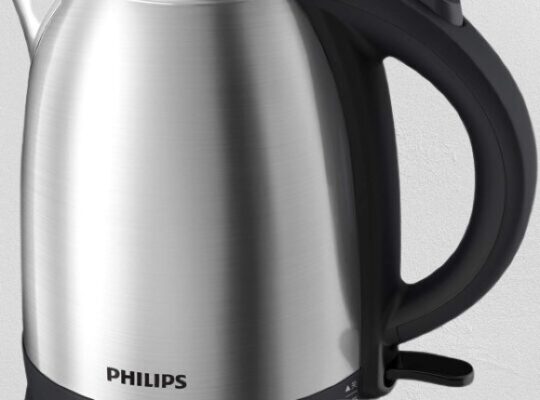Using an electric kettle can make your daily routine much simpler, but safety is key. You need to guarantee it’s on a stable, heat-resistant surface and that you’ve filled it properly. It’s essential to follow the right steps to avoid mishaps, especially when it comes to boiling water. Let’s explore the best practices to guarantee you’re using your kettle safely and effectively, so you can enjoy its convenience without worry.
Key Takeaways
- Always place the kettle on a stable, heat-resistant surface away from edges and heat sources to prevent accidents.
- Fill the kettle with cold or room-temperature water only, ensuring not to exceed the maximum fill line.
- Ensure the kettle is unplugged before filling and securely close the lid before turning it on.
- Wait for a few moments after boiling before opening the lid to avoid steam burns.
- Regularly clean the kettle and descale it monthly to maintain performance and prevent buildup.
Understanding Your Electric Kettle
Understanding your electric kettle is essential for safe and efficient use. Familiarize yourself with its components, including the water reservoir, lid, and heating element.
Always verify the kettle is placed on a stable, heat-resistant surface before use. Check the maximum fill line to prevent spillage and verify proper boiling.
Ensure your kettle is on a stable, heat-resistant surface and never exceed the maximum fill line to avoid spills.
Never operate the kettle when it’s empty, as this can lead to overheating and damage. Make certain the power cord isn’t frayed or damaged; a faulty cord can pose serious risks.
Additionally, avoid touching the kettle’s body during operation, as it can become very hot. Regularly clean the kettle to maintain performance and prevent scale buildup, verifying that your kettle remains safe for everyday use. Utilizing the automatic shut-off feature is crucial to prevent overheating and burns during operation.
Choosing the Right Location
When choosing the right location for your electric kettle, make certain it’s on a flat, stable surface away from the edge of counters to prevent accidental spills or tipping. Avoid placing it near heat sources or damp areas, as moisture can damage the kettle’s electrical components. Consider the height of the surface; you want it to be easily accessible but not too high for safe pouring. Electric kettles are designed for quick heating time, making their placement crucial for efficiency and safety.
| Safe Locations | Unsafe Locations | Notes |
|---|---|---|
| Kitchen countertops | Near sinks | Avoid splashes and spills |
| Dining tables | Near stovetops | Prevent heat damage |
| Dedicated appliance shelf | On high cabinets | Guarantee easy access |
Following these guidelines guarantees a safer experience while using your electric kettle.
Filling the Kettle Safely
With your electric kettle safely positioned, you can now focus on filling it properly. Start by guaranteeing the kettle is unplugged. This prevents any accidental activation during filling.
Use a clean, steady water source and avoid overfilling; most kettles have a maximum fill line clearly marked. Filling beyond this line can lead to spills and potential hazards.
Always use cold or room-temperature water; never add hot water, as this can damage the kettle. When pouring water, aim for the spout and avoid pouring too quickly. If you’re using a jug, guarantee it’s stable to prevent slips.
Always fill your kettle with cold or room-temperature water, and ensure stability when pouring to avoid spills.
Finally, wipe up any spills immediately to maintain a safe and clean workspace. Additionally, it’s advisable to clean the kettle regularly to prevent limescale buildup, which can affect its efficiency. Following these steps will help guarantee your safety while filling the kettle.
Operating the Kettle Correctly
To operate your electric kettle correctly, first verify it’s on a stable, flat surface and plugged in.
Confirm the kettle is filled to the recommended level, avoiding overfilling, which can lead to spills or accidents.
Close the lid securely before turning it on to prevent steam from escaping.
Select the desired temperature setting if your kettle has this feature, and press the power button.
Always keep the kettle away from the edge of the counter to minimize the risk of it being knocked over.
When it’s done boiling, wait a moment before opening the lid to avoid steam burns.
Finally, never touch the body of the kettle while it’s in use, as it can become extremely hot. Additionally, be aware that the heating element in the kettle is designed to generate heat rapidly, making it essential for efficient boiling.
Cleaning and Maintenance Tips
Although keeping your electric kettle clean might seem like a minor task, regular maintenance is crucial for its longevity and performance. Here are some tips to help you maintain your kettle safely:
| Task | Frequency |
|---|---|
| Empty after use | Every time |
| Wipe exterior | Weekly |
| Descale (vinegar mix) | Monthly |
| Clean filter | Every month |
| Check power cord | Regularly |
When cleaning, always unplug your kettle and allow it to cool. Use a soft cloth for the exterior and a mixture of water and vinegar for the interior. Avoid abrasive cleaners that could damage the surfaces. Following these steps helps guarantee your kettle remains safe and efficient for daily use.
Troubleshooting Common Issues
Have you ever encountered issues with your electric kettle not boiling water efficiently?
First, check if the kettle is plugged in securely and that the outlet is functioning. If it still doesn’t heat, inspect the power cord for damage.
Limescale buildup can also hinder performance; descaling your kettle regularly can prevent this.
If you notice strange noises or a burnt smell, unplug the kettle immediately and stop using it.
It’s essential to guarantee the kettle’s water level is above the minimum mark to avoid overheating.
Finally, if problems persist, consult the manufacturer’s manual or contact customer support.
Your safety is paramount, so never ignore warning signs from your appliance.
Frequently Asked Questions
Can I Use My Electric Kettle for Cooking Food?
You can use your electric kettle for cooking certain foods, like instant noodles or oatmeal. Just make sure you only add water, avoid mixing in other ingredients, and always follow the manufacturer’s guidelines for safe usage.
Is It Safe to Leave the Kettle Plugged In?
It’s best not to leave your kettle plugged in when not in use. Unplugging reduces fire risks and conserves energy, ensuring your kettle stays safe and operates efficiently whenever you need it for boiling water.
What Materials Are Safe to Use With My Kettle?
You should only use materials specifically designed for electric kettles, like glass, stainless steel, or BPA-free plastic. Avoid using metal utensils inside, as they can damage the kettle and pose safety risks. Always prioritize safety.
How Often Should I Replace My Electric Kettle?
You should replace your electric kettle every 3 to 5 years, or sooner if you notice any signs of damage or malfunction. Regular maintenance and monitoring can help extend its life while ensuring safe usage.
Can I Use Distilled Water in My Kettle?
Yes, you can use distilled water in your kettle. It reduces mineral buildup, prolonging the kettle’s lifespan. Just verify the kettle’s manufacturer doesn’t advise against it, as some models may have specific recommendations.
Conclusion
Using an electric kettle safely is essential for everyday convenience. By understanding your kettle, choosing a safe location, filling it properly, and operating it with care, you can enjoy its benefits without risk. Regular cleaning and maintenance will guarantee peak performance and longevity. Always remember to handle the kettle with caution, especially after boiling, to prevent burns. With these tips in mind, you can confidently incorporate your electric kettle into your daily routine.
